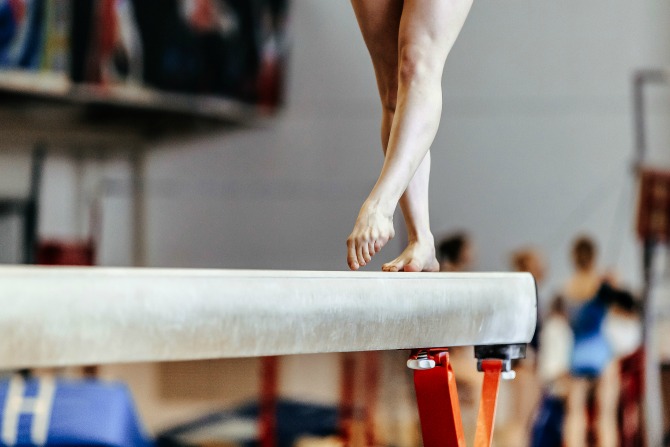
Social media can be an excellent learning tool for dancers looking for advice on how to improve technique including flexibility, strength, splits, turnout, elevations & turns. The challenge is to take your information from recognised sites where the information provided is based on safe dance practice rather than anecdotal personal experiences.
We are often asked by enthusiastic students how they can improve their technique or flexibility – all inspired by content on social media… While this inspiration is excellent we believe that each dancer has their own journey – that each body is unique!
While poses on Instagram may look fantastic and seem easy to achieve, the reality may be very different. The photographs are likely of extremely flexible or even hypermobile dancers who make the pose look easy, when the reality is most of us will never safely achieve such extreme limits of flexibility due to every dancer having a different body type.
Many stretches or poses seen on social media may not be suitable for certain age groups. Dancers between the ages of 8-14 are vulnerable to certain injuries due to the fragile nature of their growing skeleton, growth plates, cartilage and muscle attachments to the bone. Moves including toe overs, knee drops, side tilts and pushing into second splits can cause long term damage to bone, cartilage and ligaments.
Certain extreme poses or ‘tricks’ may result in specific injuries. And while extreme tricks are eye catching or maybe considered mainstream, attempting these unsupervised by a teacher and without the proper preparation or technique may result in known significant injuries. A couple of examples below:
Low back pain during extreme extensions like deep backward port de bras or arabesque where the abdominal muscles are not engaged during the pose, may be the first a dancer knows he or she was born with a crack in the low back vertebra (pars interarticularis). This may result in a stress fracture in the low back halting the dancer’s training until the pain settles.
Advice: always engage the abdominal muscles and lengthen the spine during big extensions.
The hip socket may not have formed into the perfect ‘cup shape’ which means the hip ball & socket doesn’t fit perfectly (dysplasia), causing the dancer great difficulty attaining turnout, second splits, side tilts and leg mounts. Pushing for extreme ? flexibility in this situation can cause irreversible hip joint cartilage damage which is extremely painful, is very difficult to settle and may require surgery. Advice: have a dance physiotherapist measure your hip joint flexibility including turnout and advise you on careful training and stretching.
Careless knee drops and poor technique landing onto the growth plate at the front of the knee (tibial tubercle) can cause permanent changes in size and shape of the tubercle causing the dancer long term pain.
Advice: use knee guards, practice safe knee drops, avoid timber floors.
Poorly controlled toe overs can cause stress fracture or complete fracture of the vulnerable toe bones (metatarsals) which requires 6-8 weeks away from dance wearing a walking boot (moon boot).
Advice: prepare carefully, strengthen specifically before attempting toe-overs.
Social media is a great source of inspiration, adviceand ideas however we encourage dancers to think intelligently about what they see, choose what is right for them and prepare safely.
Always check with your dance teacher or dance physiotherapist before copying anything you see on the internet to be sure it is safe for you. Your teacher or physiotherapist will help you get there quicker & safer if it a realistic goal.
At Kinetica Physiotherapy we can provide you with your own flexibility and strength baselines and the tools to allow you to progress towards a desired goal more quickly.

